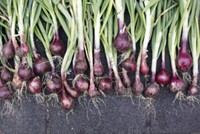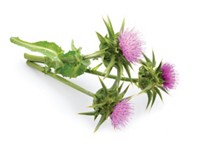Advertisement
Grab your lab coat. Let's get started
Welcome!
Welcome!
Create an account below to get 6 C&EN articles per month, receive newsletters and more - all free.
It seems this is your first time logging in online. Please enter the following information to continue.
As an ACS member you automatically get access to this site. All we need is few more details to create your reading experience.
Not you? Sign in with a different account.
Not you? Sign in with a different account.
ERROR 1
ERROR 1
ERROR 2
ERROR 2
ERROR 2
ERROR 2
ERROR 2
Password and Confirm password must match.
If you have an ACS member number, please enter it here so we can link this account to your membership. (optional)
ERROR 2
ACS values your privacy. By submitting your information, you are gaining access to C&EN and subscribing to our weekly newsletter. We use the information you provide to make your reading experience better, and we will never sell your data to third party members.
Biological Chemistry
Organic onions are richer in flavonoids
A six-year comparison of organic versus conventional onions shows higher levels of phytochemicals thought to promote health
by Alla Katsnelson
July 3, 2017
| A version of this story appeared in
Volume 95, Issue 27
Many shoppers believe organic vegetables are healthier than their conventionally grown counterparts. But previous studies of differences between the two types of produce have relied on vegetables bought off the shelf or have encompassed just a couple of years of side-by-side growth, making it difficult to rule out the effects of annual differences in weather or other factors. Researchers from the Teagasc Ashtown Food Research Centre have now compared organic and conventional cultivation of two varieties of onions grown in the same location over six seasons. They report that organic onions contain a significantly higher amount of two types of flavonoids, which are compounds that some studies have shown may protect against chronic health conditions such as cardiovascular disease, diabetes, and cancer (J. Agric. Food Chem. 2017, DOI: 10.1021/acs.jafc.7b01352). Between 2009 and 2014, the team grew Red Baron (red) and Hyskin (yellow) onions using both conventional cultivation, which includes the use of mineral fertilizers and synthetic pesticides, and European Union organic farming methods, which largely exclude those practices. They analyzed the compounds, including red anthocyanin flavonoids and the yellow flavonoid quercetin, in freeze-dried onion extracts using high-performance liquid chromatography and other techniques. Overall, the total flavonoid content was 10 to 50% higher by dry weight in the organic onions. The team attributes the flavonoid gap primarily to the differences in soil management and pest control. In organic farming, plants experience more stress, explains study author Dilip K. Rai, which prompts them to generate secondary metabolites such as flavonoids as a defense mechanism.





Join the conversation
Contact the reporter
Submit a Letter to the Editor for publication
Engage with us on Twitter